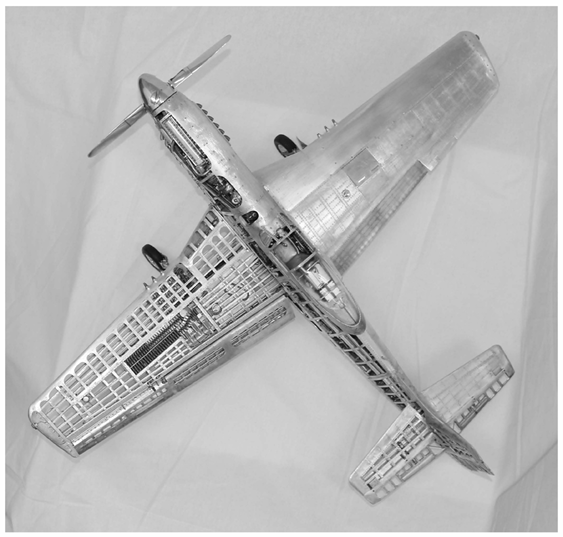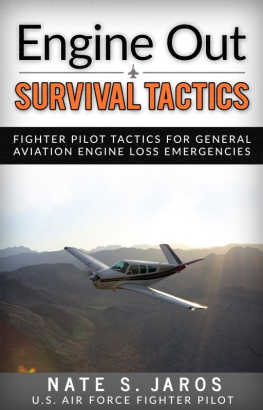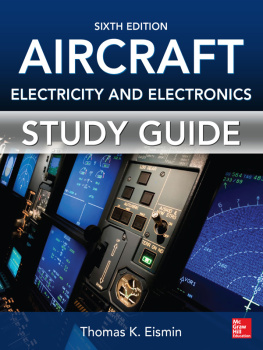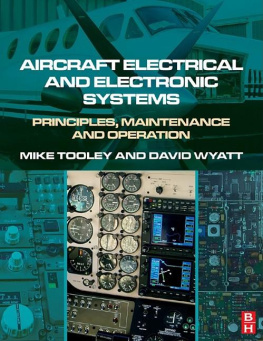
Aircraft Systems for Pilots
Fourth Edition
by Dale De Remer
Aviation Supplies & Academics, Inc.
7005 132nd Place SE
Newcastle, Washington 98059-3153
2017 Aviation Supplies & Academics, Inc.
All rights reserved. No part of this publication may be reproduced, stored in a retrieval system, or transmitted in any form or by any means, electronic, mechanical, photocopy, recording, or otherwise, without the prior written permission of the copyright holder. While every precaution has been taken in the preparation of this book, the publisher and Dale De Remer assume no responsibility for damages resulting from the use of the information contained herein.
None of the material in this book supersedes any operational documents or procedures issued by the Federal Aviation Administration or other governing agency, manufacturers, schools, or operator standard operating procedures.
ASA-ACSYS-P-EB
ISBN 978-1-61954-628-8
Cover photo: The Joe Martin Foundation and the Miniature Engineering Craftsmanship Museum. Please seeAcknowledgments for full details and acknowledgments regarding the cover image.
Introduction
This is not a book of new knowledge. It is, rather, an arrangement of existing knowledge from many sources into a concise presentation of what pilots should know about basic aircraft systems, based on my experiences over thirty-five years of flying and fourteen years of teaching Aircraft Systems to university students.
This text includes a brief study of the fundamentals of physical matter (from which airplanes are made) and mechanics (how airplane parts act and react) and sufficient study of each type of system which, when understood, will allow the professional pilot to stay abreast of the learning which must occur as the pilot advances into management of more and more complex aircraft.
How To Use This Textbook
Bold words have been chosen to call the readers attention to their importance . When you read a bold word, be alert because the word will be defined or described within the sentence OR it has been so defined earlier OR shortly will be defined.
Bold Words:
- Are about to be defined or describedbe alert for this.
- Are important to the pilots knowledge baselearn them!
- Are very important to the meaning of the sentence. If they are not defined, they are considered to be common knowledge. If you dont know the word and cant find it defined nearby in the text, seek its meaning in the classroom or from other books.
- If you run across a word you dont know that isnt bold, stop and consult your dictionary. It is the only way you will be able to fully understand the sentence you have just read and besides, this is how we all build our vocabulary.
Insofar as possible, publishing standards (abbreviations, etc.) follow those of the publications manual of the APA as it is a standard that is widely accepted by aviation programs in higher education.
This book is designed to permit the student to self-learn. To utilize your instructor most efficiently, learn the assignment BEFORE coming to class. Use the study questions, as one method, to see how well you have understood what you have studied. Make notes or questions on what you dont understand so you can get further explanation and clarification from your instructor. This way. the instructor wont need to use valuable class time to teach you what you can learn on your own. In the class time saved, your instructor can take you beyond the book . By this means, even more can be learned in the time available. Rememberits YOUR class time!
For the pilot who is not involved in a formal study program, welcome to another opportunity to have funlearning more about airplanes! I hope you enjoy the adventure .
Acknowledgements
The author wishes to thank the administration, faculty, and staff of the Center for Aerospace Sciences for providing the environment and encouragement during the long process of researching and writing this book. Special thanks go to Mr. Greg Wagner, Assistant Professor of Aviation, for his assistance in proofing many of the chapters; Dr. Duane Cole, Professor of Physics, UND, for his assistance with Chapter One; David Blumkin for his critique of Chapter Nine; Mr. Mike Miller, IA for his proofreading efforts; and Mr. Jeff Boerboon for his contribution about preflight inspection in Chapter Sixteen. Also, many thanks to Dale Hurst and the staff at IAP, Inc., as well as Becky See, for the skill and professionalism that made completion of this book a very pleasant experience.

Cover photo: The Joe Martin Foundation for Exceptional Craftsmanship and the Miniature Engineering Craftsmanship Museum for providing the picture of the Young Park P-51 Mustang model depicted on the cover. Young Park, a retired dentist, lived in Hawaii and was an aircraft modeler since childhood. He had a lifelong dream of making an aluminum airplane model resulting in several beautifully crafted 1/16 scale models that can be seen at the Miniature Engineering Craftsmanship Museum in Carlsbad, California. For more information about Young Park or to learn more about the foundations museum, visit their website at www.craftsmanshipmuseum.com.
Chapter I
Physics
General Characteristics of Matter
Physics is the term applied to that area of knowledge regarding the basic and fundamental nature of matter and energy. It does not attempt to determine why matter and energy behave as they do in their relation to physical phenomena, but rather how they behave.
The persons who fly, maintain, and repair aircraft should have a knowledge of basic physics in order to be able to understand the interactions of matter and energy.
This may be a review for those who have a background in physics. I suggest you read it anyway. You may find the aircraft applications interesting!
Matter
Although matter is the most basic of all things related to the field of physics and the material world, it is the hardest to define. Since it cannot be rigidly defined, this chapter will point out those characteristics which are easily recognizable.
Matter itself cannot be destroyed, but it can be changed from one state into another state by chemical or physical means. Matter is often considered in terms of the energy it contains, absorbs, or gives off. Under certain controlled conditions, it can be made to aid man in the process of flight.
Matter is any substance that occupies space and has mass. There are four states of matter: (1) Solids , (2) liquids , (3) gases , and (4) plasma . Solids have a definite volume and a definite shape; liquids have a definite volume, but they take the shape of the containing vessel; gases have neither a definite volume nor a definite shape. Gases not only take the shape of the containing vessel, but they expand and fill the vessel, no matter what its volume. Plasma is made up of very hot, ionized gases. The gases are so hot that thermal collisions dissociate all of the atoms into positive ions and electrons. Most of the matter in the universe is plasma. The sun and all the stars are giant balls of plasma. About 99% of the total mass of the universe is in this plasma state.
Water is a good example of matter changing from one state to another. At high temperature it is in the gaseous state known as steam. At moderate temperatures it is a liquid, and at low temperatures it becomes ice, a solid state. In this example, the temperature is the dominant factor in determining the state that the substance assumes. Pressure is another important factor that will effect changes in the state of matter. At pressures lower than atmospheric, water will boil and thus change into steam at temperatures lower than 212 F (100 C). For example, the vapor pressure of water at 98.6 F (37 C) is equal to atmospheric pressure at about 63,000 feet. This means that blood will boil at that pressure altitude! Pressure is a critical factor in changing some gases to liquids or solids. Normally, when pressure and chilling are both applied to a gas, it assumes a liquid state. Liquid air, which is a mixture of oxygen and nitrogen, is produced in this manner.








